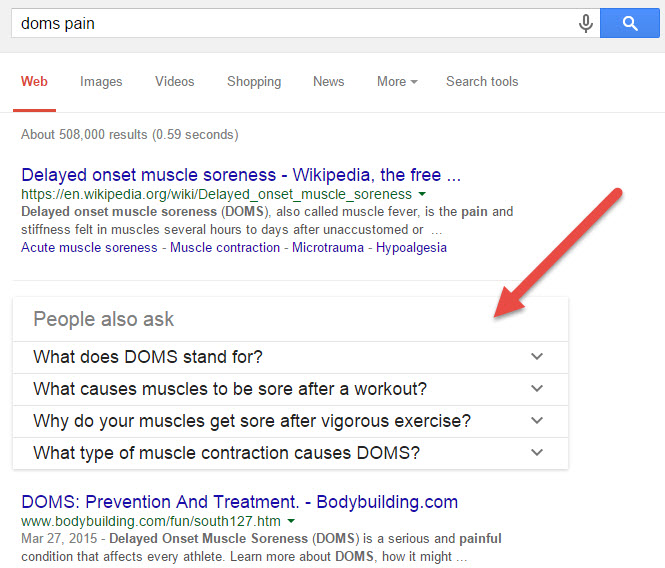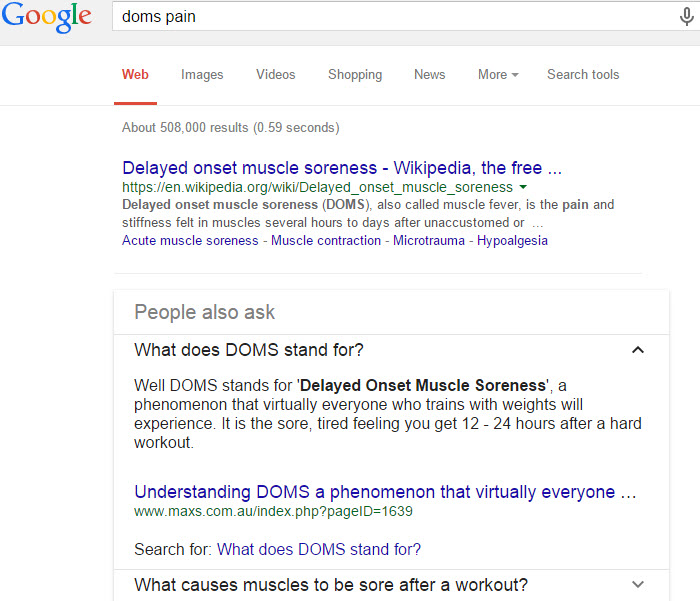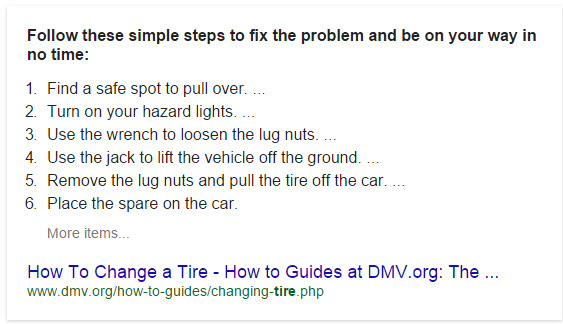You may have seen that Search Engine Land recently published an article called ‘How to get Featured Snippets for Your Site’. This article delves into the way Google displays answers to numerous search queries directly in the search results, and how to use this to get featured snippets for your own site. We decided as a little experiment, we would replicate it to show you how to get Google featured snippets in search results from your website.
Now it started a little like this…. yesterday I decided to start going back to the gym proceeding a 10 month hiatus of eating and binge watching Netflix. When I previously attended the gym I had a weights training and HIIT program. I decided that I would use this same program, but reduce the weight so I wouldn’t be in too much pain after my workout. Come next morning I was in horrible pain awaiting the sweet release of death. What was this evil?
So of course, as with any modern day problem I Googled it. Google told me it was something called ‘DOMS’ (delayed onset muscle soreness). So I did another search for ‘doms pain’, and here’s what Google gave me:
The search results provided me with a ‘People also ask’ widget, which is populated by Google’s autocomplete suggestion feature. As you may know Google autocomplete works by providing suggestions based on other popular searches by people around you. Based on my ‘doms pain’ search other people are also searching ‘What does DOMS stand for?’, and various other questions. When I click on one of these suggestions I am provided with the answer directly in the search results, and I don’t even need to leave the SERP’s!
Now if you’re worried that this will decrease your website traffic, don’t be! Search Engine Land has got you covered with their Featured Snippets Experiment, which discusses this in more detail.
Now this feature also appears differently with searches such as ‘how to boil an egg’, which evidently I need to Google because I don’t actually know how to do it!
So How Do you Get Featured Snippets in Google Search Results?
Although there is no exact science, there are a few things you can do to increase the chances of your website pages featuring directly in Google Search Results. Here’s what we suggest:
1. Identify a Question or Problem that is Relative to your Business or Website Offering
Identifying the types of questions or problems your target audience experiences is essential to define. Now if you’re stuck on a way of identifying what questions or problems your users experience, there is a quick way to get some ideas. This process involves using Google’s autocomplete feature (again!).
I’ll show you an example. Say you’re a website that provides a variety of recipes and cooking related basics. Let’s use an egg as an example. Enter the following query into Google, and wait for auto suggest to work its magic:
Using the asterisk will assist you in identifying unknown questions or queries. This can be adopted for virtually anything. This also works on location based searches such as ‘how much does * cost in Africa’. Search Engine Land recently discussed this process in more detail in their Most Googled Products post.
2. Provide an Answer to the Question on Your Site
Once you have identified the questions and problems your users experience, you can start answering these questions and problems with a clear and concise answer that directly answers the question. Something that seems to work well is to answer questions using numbered steps. For example, if I search ‘how to change a tyre’ I can follow these simple numerical steps:
3. Provide Information Beyond the Answer
Providing a direct answer is great, but adding additional information on the topic is a winning combination. In the Tyre example above, you could provide further information about how long you can drive using the spare tyre. You could also give insight on how to avoid getting holes in your tyre etc.
4. Make your Answers Easy to Find
Once you have answered the questions on your site, and you’re happy with the page ensure that it is easy to find for Google and all users. Accessibility is key! Share it across your social networks, whilst adding the page to your sitemap and submitting it to Google Search Console (Webmaster Tools) using the ‘fetch as Google’ feature. This will increase its likelihood of discoverability and indexation.
5. View Other Websites that Have Successfully Received Featured Snippets
Look at other websites that have successfully received featured snippets in the Google search results, and identify what they are doing on their answer pages that you could replicate. Is there something that seems to work for them? Use it to inspire your strategy!
6. Wait, Test & Refine
Once you have completed all of the above steps, it’s time to wait and test. Google the questions you have answered, and see if Google has included the answer directly in search results sourced from your website!
Are you going to try to get featured snippets in the Google search results?













